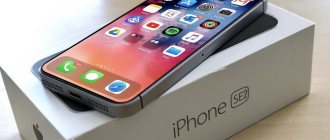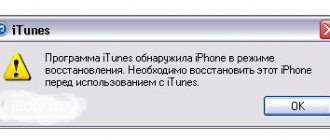The first iPod was released by Apple in 2001 with the slogan “A thousand songs in your pocket.” At that time, it was the smallest portable player, because it used a 1.8'' hard drive, while all competing models worked with 2.5'' drives. Nowadays 2.5-inch drives are used in laptops.
The iPod classic line includes 6 generations of portable media players. Initially, they could only be connected to Mac computers, but from the second generation they began to work with Windows.
At first glance, the decision to invest money in compatibility with competitors’ operating systems seemed strange, but the positioning of Apple’s new products as mobile devices convenient for any user determined the company’s further popularity in the market of portable gadgets. One generation of iPod was almost instantly replaced by another precisely because this media player was convenient and sold well.
In 2002, back in the days of the first generation version with a capacity of 10 GB, Apple added PDA functions: viewing text files, synchronizing contacts and schedules with a computer. Of all the iPod models, the Touch line stands out in appearance - players with a touch screen look more like a smartphone. The rest of Apple's players have a minimalist, intuitive interface that has changed little since 2001. The body has become thinner, the screen and memory have become larger, but the Click Wheel, a visually recognizable circle of buttons under the screen, continues to be associated with Apple.
iPod classic
The entire line received the name classic when its latest, sixth generation was released. In 2014, Apple stopped production of the classic model, which by that time had already been replaced by players in the touch line. Although the classic also had touch scrolling, the touch line added a multi-touch interface, and these players are not much different from the iPhone. The control wheel—without a screen—has been preserved in the shuffle line of players.
The color screen first appeared in the fourth generation of the Apple iPod classic. Special editions were dedicated to this event - a version in black and red design from U2 with the signatures of all band members and the ability to download songs for free, as well as an option with the Hogwarts coat of arms engraved on the steel cover. The fifth generation of iPod was already capable of playing video. This model was also released in a special edition from the group U2.
Interestingly, the classic still has the largest capacity among the iPods - the latest generation of players, often called the seventh, has 160 GB of storage space. This is due to the use of 1.8'' hard drives, which had a lower cost compared to flash memory. They are not currently produced due to decreased demand.
[edit] Hatred
iPod user
The great popularity of the iPod generates hundreds of hatred among fighters for justice. Not satisfied with simply using competitors' products, they uncontrollably shit bricks on the relevant forums, which opens up endless holivars. For many patients, their dislike for iPods is explained by their dislike for Apple itself. They hate Apple, Apple wankers and Jobs personally. Formal argumentation varies:
- iTunes is a completely non-kosher program, without which IPOC does not function. The inaccuracy of the program is expressed, for example, in the fact that if you show it the tracks available on the computer, it will immediately try to add them to its database, hiding them in such a cunning way that without half a liter they will not be found on the disk. This feature can be disabled with one tick in the settings, but critics do not need to know about this. Moar of hatred makes the iPod want to synchronize the database with the computer, and only five computers for each device (including reinstalling the operating system). Moreover, when installing iTunes on Windows, the program brings with it a bunch of services like Bonjour, Apple Software Update and other heresy that makes nets and laptops shit like bricks. If you handle iTunes carelessly, you can easily lose all the content on your device or in the iTunes database. By the way, a library has now been released for complete control of non-jailbroken backgrounds and pods, for example, in ubuntu 10.04 it is built into the rhythmbox. There is also open-source Rockbox firmware, which allows you to play more games, listen to flac, customize controls, design, improve sound quality, and in general, change your life for the better! Do not miss! But the latest models (2010 in the sense) do not seem to be supported. But foobar2000 works with any models with this plugin, and not only it.
- Bugs in the firmware - for example, some models interrupt playback of an mp3 track if it finds an ID3v2 tag that is not kosher in its opinion.
- Low functionality - a primate-oriented menu, an equalizer for housewives and a minimum of settings seem to tell us.
- For most models, the radio only works when the remote control is connected. However, in the penultimate iPod nano, the FM antenna is already built-in, along with a voice recorder and camera.
- The case quickly loses its presentation - the back surface of the Classic and Nano 3G is made of hellishly shiny metal and gets scratched very quickly. Although, at the same time, the sixth generation Nano, except for the screen, consists entirely of some kind of cunning scratch-resistant all-metal shell, which remains in perfect condition after an anonymous person dropped it from the second floor, mercilessly shook it in his pocket and threw it against the wall.
- The headphones are evil white whistles in your ears, which, by the way, look like real ones! Suitable for checking the player upon purchase. Then burn it, or keep it for a set in case of sale. And if you decide to use them, then leave them at home in winter, at −10 Celsius and ~70% humidity, the headphone wires harden and become plastic in the literal sense. Even with careful use, they die within literally four months. China, dammit. However, with the release of the fifth iPhone and the seventh generation nano, Apple introduced a new version of white ears, calling them earPods. And, surprisingly, the headphones turned out, in general, quite good.
- USB cable - it is only on one side of USB; iPods, iPhones and iPads have their own type of port that combines USB and component/composite video output with stereo output. On the one hand, the proprietary nature is bad and they ask for hundreds of money for the cable, but on the other hand, the design is blessed and the ability to place the iPod in any docking station for listening without connecting additional wires on top or side. And the Ketans have long been riveting wires at a price below $1, which have long since proliferated all over the world (it’s easy to distinguish even look-like fakes - they don’t have a brand name on the cable).
- Service and warranty are only a year, if after a year something breaks, throw away the device, because Apple will not repair it for nothing, and for the price of repair it is better to buy a Chinese model.
- In new models, starting with Nano 4, automatic charger recognition appeared. That is, charging now comes only from a computer and a proprietary Apple charger (costs 1k!), and not from any Ketai one (suitable with a current of more than 600 mA). However, this problem can also be solved within five minutes by soldering four resistors into the cable or charger - if desired. The proprietary memory from PSPGo works with all iDevices. Has Sony started installing the same recognizers?
iPod mini
This line lasted less than two years, from January 2004 to September 2005, and was released in only two generations. Mini players differed from classic players in their smaller size, bright body colors, designations of buttons on the control wheel, as well as the body material - for compactness, it was made of anodized aluminum, one-piece, without division into front and back covers.
interesting
The iPhone 14 series will receive a new 5G modem
The fifth beta version of iOS 15.4 and iPadOS 15.4 has been released
The display on mini models is monochrome, a little more than 4 cm diagonal, with adjustable contrast levels and a fairly bright backlight. The design was similar to the classic version, but buyers were pleased with the variety of colors - these players were produced in blue, green, pink and silver cases. All these colors had a pronounced metallic tint.
[edit] Love
Love prevents you from seeing the facts.
The charismatic image of Apple has won many supporters who are ready to love no matter what. To be fair, it should be noted that true ipodophages are more tolerant people, and they usually don’t start holivars, quietly ejaculating on their forums. However, God forbid you offend their religious feelings... For all the shortcomings cited by haters, amateurs will find a refutation, and for those that cannot be found, they are simply ignored. The following arguments are possible:
- The quality is really decent, although defects do happen.
- Warm tube sound.
- Design - well, it's not for everybody.
- A very good battery that really lasts for 30 hours.
- Conciseness - there is everything you need and nothing extra.
- Incredible Disk Capacity - Applies to Classic HDD models.
- Price – many people find the price/quality ratio acceptable.
In advanced cases, the patient does not even stoop to arguing with the unworthy. As the disease progresses, it can lead to the purchase of a racial Pindostan Apple computer at the cost of hundreds of oil. Self-recovery is unlikely; shock therapy is required, for example, using a good non-Apple player, although nothing can defeat a true apple eater, I guarantee it.
iPod shuffle
The 1st generation iPod shuffle went on sale in January 2005. This model is even smaller than the mini, as Apple is the first to use flash memory in this line. And most importantly, shuffle players do not have a display, only control buttons. The name comes from the English word denoting the mode of playing songs in random order.
Models of the next generations of this line became even smaller, but at the same time they received more memory. Shuffle players also had a richer range of colors compared to the classic version. Already their second generation was released on the market in five colors, and the fourth generation in seven. Red players marked Product Red are produced in limited editions. Apple donates part of the money from their sales to international charities.
Apple ABC. Part 5: The History of the iPod
Time to continue our relatively new series called “The ABCs of Apple.” In today's fifth article, we'll talk about what an iPod is and how it came into being, going through its entire history - from the iPod 1G to the iPod touch 6G.
In the 90s, the popularity of portable audio players increased sharply. Sony, which developed the Walkman . Of course, there were others on the market who tried to invent something similar, but none of the attempts led to success. It’s worth figuring out why the Walkman lost popularity and gave way to the iPod? Analysts found that Sony made too many mistakes during this period. For example, it diligently promoted the patented MD audio format, which was used only by Walkman, although at the same time the MP3 format was gaining popularity. And 5 years later, Apple introduced its revolutionary product - the iPod, which Sony did not pay enough attention to and ultimately paid for it.
The idea to create the iPod came to the mind of a certain Tony Fadell, who helped develop portable devices at Philips and General Magic. Later, Tony offered various large companies to finance his new project, but was refused everywhere. Then he decided to go to Apple, where Steve Jobs, fortunately, gave the idea the green light and hired Tony as a contractor. Steve set a tight deadline, but that didn't stop Fadell. Development was in full swing, but Apple faced one problem - the high price of the iPod. At that time, there were cheaper players on the market; not everyone could afford to buy an iPod. In order to load music into the player, users had to connect the device to a Mac. By the way, when creating the iPod, Steve Jobs had one thought in his head: “1000 songs in your pocket,” but he didn’t want the name to have anything related to the word “music.” There is a concept in the name - in English Pod means a capsule that is detached from something. In this case, that “something” is a Mac. Then they simply added an “i” like the rest of Apple’s devices, and the result was the iPod. The second problem was that iTunes only worked on the Mac OS platform; soon after the release of the second generation iPod, the problem was solved - iTunes appeared on Windows.
First generation iPod
The presentation of the first iPod took place on October 21, 2001. The design of the first generation iPod was developed by Jonathan Ive, everything was in the Apple style - nothing superfluous, everything was quite simple and convenient. The iPod was produced in 5 and 10 GB versions. The weight was 184. At the presentation, Steve Jobs compared the size of the player with the size of a deck of cards. The iPod could play music for 12 hours on a single charge. It was from the first generation that a proprietary, not yet touch-sensitive, control wheel appeared on the player.
Second generation iPod
The device was released on July 17, 2002. This generation is almost no different from the previous one. The only difference is that users were given the opportunity to download music from the Windows platform. The second generation iPod line included a 20 GB version. We said that the price of the iPod 1G was high. Apple managed to reduce the price by $100. No further changes were found.
Third generation iPod
iPod 3G was released on April 28, 2003. In this generation, the iPod has lost 20% weight compared to its predecessor. Do not forget about the law of conservation of energy - if something is improving somewhere, it means that somewhere it is getting worse. Thus, the operating time of the iPod dropped from 12 hours to 8. In addition, Apple equipped the devices with 40 GB of storage. The front design has also been slightly changed: the buttons have been moved below the screen, and the well-known Click Wheel has also appeared.
Fourth generation iPod
In October 2004, iPod Photo was released, which featured a color display for the first time. The device could work for 5 hours in photo slide show mode and 15 hours playing music. iPod Photos were also produced with 30-60 GB of memory on board.
Fifth Generation iPod - iPod Video
It was also called iPod Video, but Apple did not focus on the new ability to watch videos and simply called it iPod. He was allocated 30 GB and 60 GB. Produced in black and white colors.
Sixth generation iPod - iPod Classic
On September 5, 2007, the iPod Classic was released, which became the last in its line. 80 GB, 120 GB and 160 GB models rolled off the assembly line. Even today, the iPod Classic is the most spacious player. The operating time of the device is 6 hours when watching videos, 36 hours when listening to music.
Apple further improved the rest of the iPod line, with the exception of the iPod Classic, which is now officially retired.
First generation iPod mini
iPod mini 1G hit the market on January 6, 2004. It came out after the iPod 3G. Changes have affected the front part: navigation keys are built into the Click Wheel. iPod mini 1G is now available in five colors. The memory capacity was 4 GB, and the operating time was as much as 18 hours.
iPod mini second generation
In 2005, Apple was very actively developing portable players. Thus, in 2005, the long-playing iPod mini 2G appeared, which could play music for up to 18 hours without recharging. Memory capacity is 4 GB and 8 GB. The iPod mini 2G line came in five colors.
First generation iPod Shuffle
Also in 2005, Apple pleased with the release of the iPod Shuffle, which was very different from its predecessors: it was devoid of a screen and became longer, like a remote control. Memory capacity was reduced: iPod Shuffle was available in 512 MB and 1 GB versions, operating time - 12 hours. This iPod was convenient for listening to music during workouts, since there was nothing superfluous in it, everything was done for convenient and quick control blindly.
Second generation iPod Shuffle
In October 2006, the iPod shuffle was released, which was not at all similar to its predecessor. Apple has reduced its size, and the memory capacity has been increased to 1 GB. The player's continuous operation time remains the same - 12 hours.
iPod shuffle third generation
The only difference from its predecessor was the presence of a red version of the iPod, the proceeds from the sales of which went to charity.
iPod shuffle fourth generation
The iPod is similar to the second generation iPod shuffle, but Apple made it square. The memory capacity was 1 and 2GB. At first, the iPod was released in metallic color, but later Apple expanded the color line and added yellow, blue, pink, green, turquoise, lavender, mint green and Product Red.
iPod nano first generation
In the fall of 2005, the first-born iPod nano was released. The name of the device speaks for itself - we can say that this is a reduced-size model of the fifth generation iPod. The device capacity varied from 1 GB to 4 GB. Operating time: 4 hours when watching movies, 12 hours when listening to music.
iPod nano second generation
In September 2006, the presentation of the second generation iPod nano took place. This player was produced in 2 GB, 4 GB and 8 GB versions. The screen became noticeably clearer and brighter, the operating time without recharging was as much as 24 hours, as highlighted in the media. iPod nano was produced in five colors.
2007 was the busiest year in the history of iPod release.
iPod nano third generation
A year after the release of the iPod nano 2G, Apple introduced the new third generation iPod nano. It was somewhat reminiscent of a smaller version of the iPod Classic. The device was sold in 4 GB and 8 GB versions. Starting with this model, iPod nano gained the ability to play video. The battery lasts 24 hours when listening to music and 5 hours when watching videos.
iPod nano fourth generation
In September 2008, the iPod nano 4G appeared on the market, which turned out to be somewhat similar to the iPod nano 3G. The difference was in the compactness of the model: the screen became longer, the body was thinner, and the Click Wheel was located slightly lower. The operating time was 24 hours in music mode (4 hours in video mode).
Fifth generation iPod nano
The screen diagonal of the iPod nano 5G has been increased by 2.2 inches. The player had a built-in camera with a microphone. Several new features have also been added, one of which is the ability to tag your favorite song on the radio. In fact, the changes only improved the iPod. Apple released them in nine colors - silver, black, purple, orange, yellow, red, green and pink.
iPod nano sixth generation
On October 4, 2011, Apple released the sixth generation iPod nano. It is immediately noticeable that it differs from its predecessors in its shape: there is no legendary wheel, a touch screen, a square shape and 3 buttons (volume controls and the power button). iPod nano 6 is very convenient for sports and for those who like to run. There are special straps into which players are inserted. They allow you to wear your iPod like a watch. So, they will not interfere when running, and you will enjoy your favorite music. The interface is made in the style of icons on the iPhone. Apple has added several fitness apps: pedometer and fitness.
iPod nano seventh generation
A year later, Apple introduced a new version of the iPod nano. The company decided to return to the fifth generation design, improving it slightly. The screen diagonal has been increased
First generation iPod touch
The release of the iPhone couldn't help but have an impact on the iPhone. So, in 2007, the first iPod touch was released, which turned out to be very similar to the iPhone, but without a telephone module. All functions are preserved. The memory capacity ranged from 4 GB to 32 GB, the operating time was 22 hours when listening to music, 5 hours when watching a movie. Users now have the opportunity to download various applications from the App Store. The performance of the device was excellent. The iPod touch has taken over some portable gaming consoles. The iPod touch 1G did not have volume buttons. Of course, this was a small drawback. The display diagonal is 3.5 inches. Steve considered this diagonal to be the most acceptable and convenient, since you can easily reach the opposite corner with your thumb. Screen resolution - 480 x 320 px.
iPod touch second generation
iPod touch 2G was released in September 2008. A noticeable change is the new stainless steel casing, which is similar to the iPhone 3G. Volume keys and a built-in speaker have also been added. In general, the iPod has become very similar to the iPhone. The player's operating time has increased by 12 hours (36 hours in music mode, 6 hours in video mode). Apple has added a “personal trainer” - Nike+, with which the owner of the device can track his calories, distance traveled and more.
iPod touch third generation
The design of the iPod 3G has not changed, but Apple has done a good job on the hardware, adding a new processor and increasing the amount of RAM to 256 MB, which affects the high performance of the device. The battery has become more capacitive due to increased performance.
iPod touch fourth generation
In 2010, the iPod touch 4G was released, which combined all the most perfect features. It's so close to the iPhone 4 that if you put them together, it would be difficult to tell the two devices apart. The iPod touch 4G was equipped with Retina Display, the resolution of which is 960 x 640 px. The processor from the iPhone 4 provides high performance. In short, the iPod touch 4G is the iPhone 4, but without the phone module. Apple was able to combine maximum capabilities in a small device.
Fifth generation iPod touch
At the WWDC conference in 2013, without any press releases, Apple introduced a new line of fifth-generation iPods. As mentioned above, the iPhone influenced the iPod, and here again, the iPod 5G has the same screen size as the iPhone 5. For the first time, the iPod can boast the performance of the iPhone 4S. A flash appeared near the camera. The iPod was sold in five colors - white, black, red, pink and yellow (the first 3 colors can only be purchased in the official online Apple Store). High technical characteristics allow you to run the heaviest applications and ensure good interface speed. We can say that iPod 5G is a more advanced iPod touch 4, it is as close as possible to the iPhone.
Sixth generation iPod Touch
The sixth generation iPod Touch (iPod Touch 6G) turned out to be a long-awaited device with updated hardware. On July 15, 2015, the most powerful of all previously created Apple players appeared on the shelves of the Apple Store. The gadget has become a worthy continuation of the line, providing users with fast work on all fronts and once again embodying the idea of “an iPhone without a phone.” In addition, the iPod Touch 6G was remembered for its pink color. In parallel with it, a barely noticeable update of the iPod nano and iPod shuffle took place.
Conclusion
After the release of the iPod, many companies tried to create their own unique product that would be better than the iPod. All attempts ended in failure. In 2006, Microsoft introduced a new player, the Zune 30, which was similar to the iPod - the same functions, the same 30 GB of internal memory, but perhaps a larger display. Steve Ballmer stated that the Zune is a completely innovative device that will compete with the iPhone. Expectations were too high and they were not met: in 2011, it was decided to discontinue production of the Zune 30.
More and more often you can see people on the streets listening to music from iPhones, and less often from iPods. Apple has always responded to people's preferences, just like all other companies. The popularity of the iPod began to decline because users became lazy to carry two devices and relied on one - the iPhone, with which they can make calls, listen to music, play, surf and much more. The iPhone has begun to fully replace the iPod and it is quite possible that our historical article is unlikely to be updated in the foreseeable future.
iPod nano
The first generation of iPod nano was also released in 2005. This line combines the best of the classic and shuffle models. Nano players replaced mini, which were discontinued at the same time. In 2011, the first-generation model could be replaced free of charge with the sixth-generation model. Apple made this decision after learning about the constant overheating of batteries in first-generation players.
The fourth generation of iPod nano, which appeared in 2008, added many functions that were no longer related to music: games, notes, calendar, contacts. The player began to synchronize with the iPhone headset, and now double and triple clicks on the headset's answer button have replaced pressing the player's buttons, and you don't need to take it out of your pocket to stop playback or switch to the next song.
The fifth generation had a video camera. The latest generation, the seventh, went on sale in 2012. This model can sync with wireless headphones and headsets using Bluetooth.
[edit] iTunes
| « | whoever bought himself an iPod fucked a dog in the mouth. | » |
| — Korean LEDs | ||
Jobs would not have been Jobs if he had not launched an attack on the hamsters on all fronts from the very beginning. Actually, the iPod itself is a player as a player, there is nothing super attractive in it except the logo in the form of a gnawed apple, but the whole industry is around... First of all, iTunes. This, as few people in this country realize, is not only a program for filling an iPod with content from a computer, but also a cleverly hidden online store. Copywriting flourishes there to the highest degree: stupid Pindos are offered to buy music for a dollar per track, thereby allowing them not to strain their front heads at all with important thought processes like: where to steal, leak and how to Google the cover. The damn store itself sorts it by albums, artists, etc., and even inserts the covers there themselves. Flavoring it with extensive zombie advertising of popular foreign orchestras. It also offers to buy Orthodox TV series and kosher movies with an autorun cover (like VCD), offering a way out for those banned from Google or torrents. By the way, since December 2012, the cinema and music store has been operating in this country. Although, alas, still with a very emasculated assortment.
The iPod became the main platform on which this scheme was tested and proved its profitability and pervasive ability in the brains of 95% of the population, which served as a solid platform for the final anal occupation with the release of the iPhone.
iPod touch
The first Apple player model with Wi-Fi support and a multi-touch display. Already the first generation players allowed you to browse web pages in the Safari browser and watch video files on YouTube, as well as listen and download songs in the iTunes Wi-Fi Music Store. The second generation players now have Bluetooth support and a built-in speaker.
The fourth generation was equipped with an HD camera. In addition, Apple used its own A4 processor for the first time. By the fifth generation of the line, the Apple processor became dual-core, and by the sixth - quad-core. The fifth and sixth generation models are available in different colors. An accelerometer and a three-axis gyroscope appeared.
In 2022, Apple's press service announced the end of support for all iPods except the touch line. The latest models in the touch line perform almost all the functions of the iPhone, with the exception of those that require a SIM card. Cameras, screen quality - in all characteristics, the iPod is not inferior to the iPhone.
But now the Internet has become such a part of the life of any gadget user that Wi-Fi alone is no longer enough. If a person has a smartphone that suits him, there is a chance that the Apple player will no longer be useful, especially considering that the price of the latest model starts at 14,000 rubles. But for now, many music lovers buy a separate device to listen to it, so as not to depend on the battery charge of their phone or tablet.
Compatibility issues
Unlike other mp3 players, the iPod requires you to install a special program - iTunes - to download music. Alternative solutions exist but are not supported by Apple. At the same time, many other players allow you to record music on them, like on any removable disk, without any special programs.
The iPod is positioned as a product compatible with the Microsoft Windows operating system. At the same time, when Windows Vista was released, the iPod could not work with this OS. This problem was later resolved (May 22, 2007).[2]
Compatibility with Linux and FreeBSD operating systems is implemented through the gtkpod utility.[3] However, Apple not only does not provide the necessary documentation for writing such programs, but also encrypts the protocol for exchanging data between the player and the computer, and even threatens legal action for reverse engineering it.[4]
Description of iPod features and functions
iPad - what is it and what is it for?
To understand what an iPod is, you need to further familiarize yourself with the capabilities of the device. The main function is clear. However, other actions are possible using the device (depending on the model range):
- Surf the Internet using Safari or another browser over a wireless network.
- View media files.
- Content creation (photo, video).
- Listening to the radio.
- Using a voice recorder.
- Downloading and working with third-party applications.
We must not forget that iPhone, iPod and iPad are completely different brand products. Below are the defining differences of the technology in question:
- no SIM card slot (standard exchange of calls and messages through a mobile operator is not possible);
- smaller memory capacity;
- Retina display even on older iPods;
- specially developed applications for iPod;
- relatively low price;
- best sound quality.
It turns out that this is simply an improved modification of the audio player of a popular company.
Should you buy an iPod today? Aspects to Consider
On the other hand, noting that the improvements to the 2019 iPod Touch are notable but not the most incredible, except that its price is really high; You may be asking, “Should I buy an iPod today?” .
Well, many users have completely forgotten about the evolution of the iPod since the developer has already gone 4 years without updating the device. So while many people were looking forward to this 2019 version, their expectations were actually very broad for what Apple showed.
Because although it improved some aspects, the vast majority of its features can be found on the sixth generation iPod .
Moreover, the question is not only whether you need to upgrade your old iPod Touch to a new one, but also in the sense that it may or may not have, when purchasing a device of this type , when, Today, you can control all these functions directly from your smartphone _
For this reason, if you only want to use the new iPod Touch to listen to music from there, it doesn't make sense to purchase it . Because you can easily do this from your mobile phone and even there you have more options to get music thanks to the different apps that you can download for it.
On the other hand, if you are a fan of iPod users and intend to try Apple's new offering of being a loyal follower of technological advancements, why not try this product? Taking this into account, it can serve you well as an independent music player when you are exercising and want to disconnect from your mobile phone.
Instructions
1 step
To turn on your iPod, first unlock it. There is a special button on the top panel of the player for this. It can move left and right: when there is an orange color next to it, the lock is on, when the player color is off. After this, press either the central button or the “Play” button, it is indicated by an arrow.
Step 2
To restart your iPod, press and hold the center key and the “MENU” key simultaneously for 5 seconds. This will lead to a so-called “hard” reboot without formatting. That is, a similar function will be useful when the player freezes, but after a reboot, your music and movies will not be deleted.
Step 3
To charge your iPod, use the device that came with it. Players of older generations were equipped with an adapter for a regular electrical network, through which charging took place. Modern iPod models are not supplied with such an adapter. They come with a USB cable through which the player is connected to a computer using a USB port. To charge and transfer music, connect your iPod via this cable to your computer.
Step 4
To flash your iPod, download the latest version of iTunes (it is always available at this link: https://www.apple.com/ru/itunes/download/). Open the new version and connect your player to your computer. The computer will recognize it, select it from the menu on the left. In the window that appears, find the “Check for Updates” or “Check for Updates” button. It is possible that installing the latest software will help solve your problem.
Step 5
If installing new software does not solve the problem, you need to completely reflash your iPod. To do this, click on the “Restore” or “Restore” button. After this, iTunes will automatically recognize the type of your player, remove the old software, download the new one and install it. It is important that the player is always connected to the computer when flashing. Be careful, a complete flashing will delete all contents of the player! It is worth noting that these instructions are relevant for iPod Classic, iPod Nano and iPods of previous generations: iPod Video, iPod Photo, etc.
How to download iPod manual
In order to download the manual to your computer or tablet, you can use the search on the site, where you only need to indicate the name of the model of your device. And then, find a PDF document that may be called “iPod player instructions.” Click on this file and save it on your personal computer or other device as “iPod player instructions”.
Also, you can download the required manual by going to the “Apple” section on the website and find your player there. Click on the PDF file with your model name and save it as, for example, “iPod user manual.”
We hope that our site helped you quickly and effortlessly find what you were looking for. Read the “iPod instruction manual” before you start using your Apple player and enjoy using your device.
reading time: 4 minutes
A range of digital audio players without displays using flash memory has appeared on the global portable technology market. The product was developed and released by the American corporation Apple, which is a manufacturer of computers, tablets, phones, and software. Versions of the iPod Shuffle differ in appearance, storage capacity, battery life, functionality and cost.
The inexpensive, widespread and most successful gadget is the 4th generation model. The rules for iPod Shuffle described below in the instructions will help you figure out how to use it correctly.
general information
The iPod Shuffle player is a high-tech device that performs the following processes:
- synchronization of songs, playlists, mixes via Genius;
- listening to music and audio files via downloading from the Internet;
- audio listening to books from the iTunes Store;
- creating and storing backup copies of files.
The main difference between Shuffle 4 and previous versions of Shuffle 1 and 2 is the presence of the VoiceOver function, which is a built-in navigation system with voiceover of track names, artist names in 29 languages and switching playlists.
The iPod Shuffle audio player is a miniature square device with rounded sides and flat edges.
[edit] Links
- From iPod to iPhone and before MacBook...
- Video review of iPod Touch 5th generation
| [ + ] Buy an iPod at a discount and get a gift! | |||||||||||
| |||||||||||
| [ + ] The iPod is an American patented product. | |||||||||||||||||
| |||||||||||||||||
[edit] Gallery
| 1 | 3 | yes | Show | Hide |
|
Specifications
The technical specifications for the iPod Shuffle 4 audio player are as follows:
- Overall dimensions – 31.6x29.0x8.7 mm.
- Weight – 12.5 g.
- Flash memory capacity – 2 GB.
- Nominal load resistance is 32 Ohms.
- Net volume – 5668 m³.
- Sound frequency – 20-20000 Hz.
- Operating temperature – 0. +35°C.
- Content temperature – -20. +45°C.
- Relative humidity – 5-95%.
- Tested altitude of use is up to 3000 m.
Advantages and disadvantages over other players
What is a teletype in an Android phone - what is it for?
Having understood what an iPod is and what it is needed for, you should compare the device with gadgets from other manufacturers.
The defining reasons why you need to buy an iPod include:
- large amount of memory;
- high-quality reproduction of musical compositions;
- ease of carrying and use due to its small size;
- support for different audio formats;
- content of additional useful functions.
How the shortcomings appear:
- high price;
- lack of battery capability when needed.
The controversial point is iTunes. Apple's iTunes software is a way to manage your iPod that has been derided in comparison to other MP3 file management programs due to:
- lack of ability to transmit information;
- inability to work with other software, for example, Winamp or Windows Media Player.
Thus, the iPod is definitely a must-have for Apple technology users. In some ways, it is the final element in the technical ecosystem.
Differences between iPod and other types of Apple equipment
Of course, the main function of the iPod is listening to music, but the functionality of this type of equipment is very extensive and can include:
- Using a browser if there is a wireless network connection feature.
- Ability to view photos and videos.
- Shooting various videos if you have a camera.
- You can listen to the radio and use a voice recorder.
- You can always use applications that were installed using a personal computer.
- Using the Pedometer function.
It is worth noting that only the iPod Touch has this functionality, since it has a touch screen and higher technical specifications. However, the iPod Nano has a pedometer function, which is a nice bonus. The simplest model is the latest Shuffle model, which has a function for listening to music, as well as several ways to obtain information about the device. This process is carried out using VoiceOver.
Many people confuse:
- IPhone.
- iPad.
- IPod.
Although they have very similar names, the functionality of these types of equipment is completely different. The most important differences between the iPod and all other types of equipment are:
Did you like the article? Subscribe to our telegram channel. News comes out faster there!
- It is not possible to use the services of mobile operators, since there is no SIM card slot.
- Quite a small amount of memory compared to other types of equipment from Apple.
- Even the oldest iPod models have Retina displays.
- The lowest price among all Apple devices.
- Excellent sound quality compared to other devices.
In short, the iPod is essentially just an improved model of the audio player.
Interface connectors and outputs
The manufacturer has developed a simple and convenient interface to control iPod Shuffle.
On the front side of the device there are standard controls:
- "Previous/Rewind";
- "Next/Fast Forward";
- "Play/Pause";
- "Volume Down";
- "Increase volume."
The following buttons and connectors are provided at the top end:
- status indication;
- headphone jack;
- VoiceOver button;
- 3 position switch.
On the back panel there is a large area latch-clip with a tight spring, which ensures good fixation to clothing.











